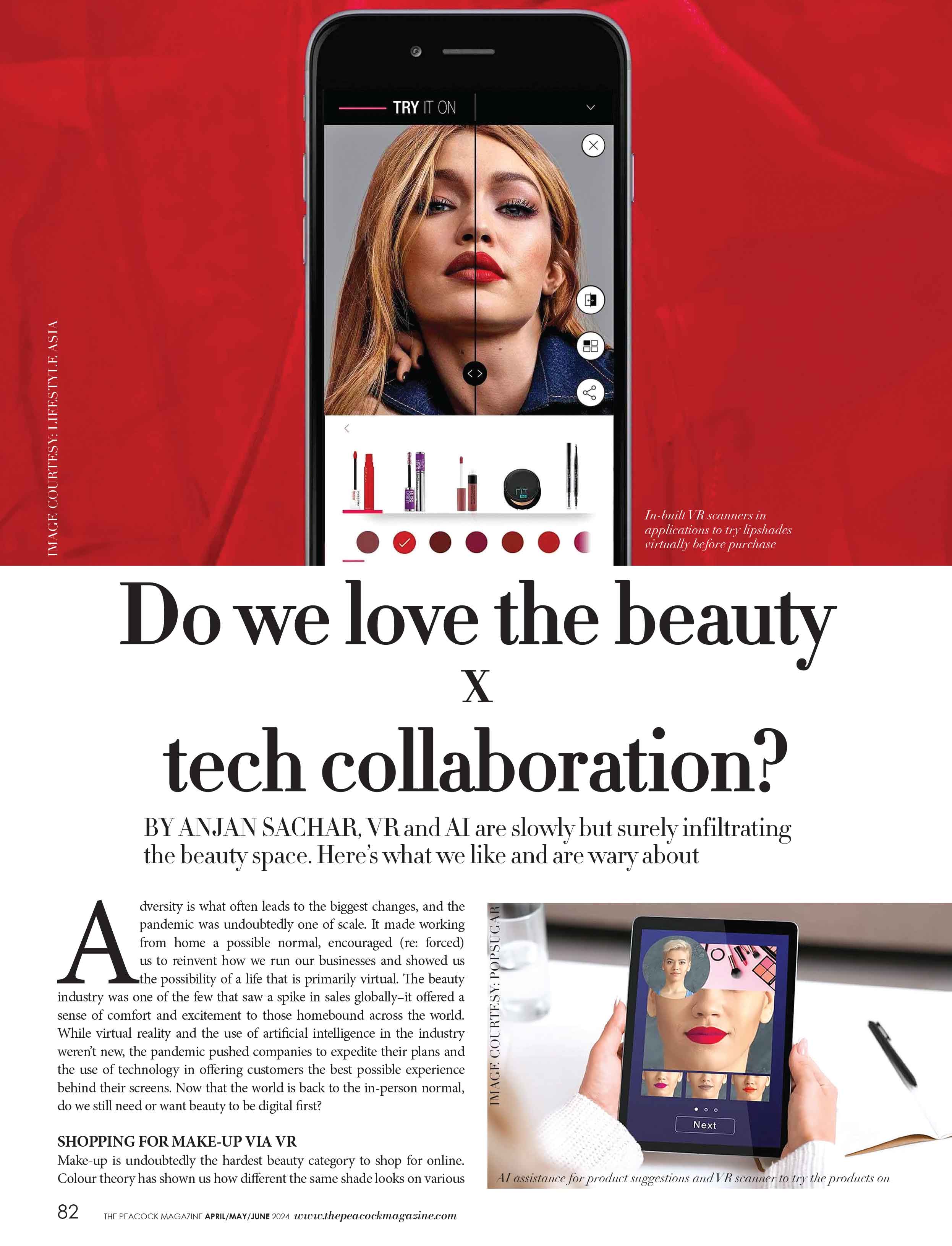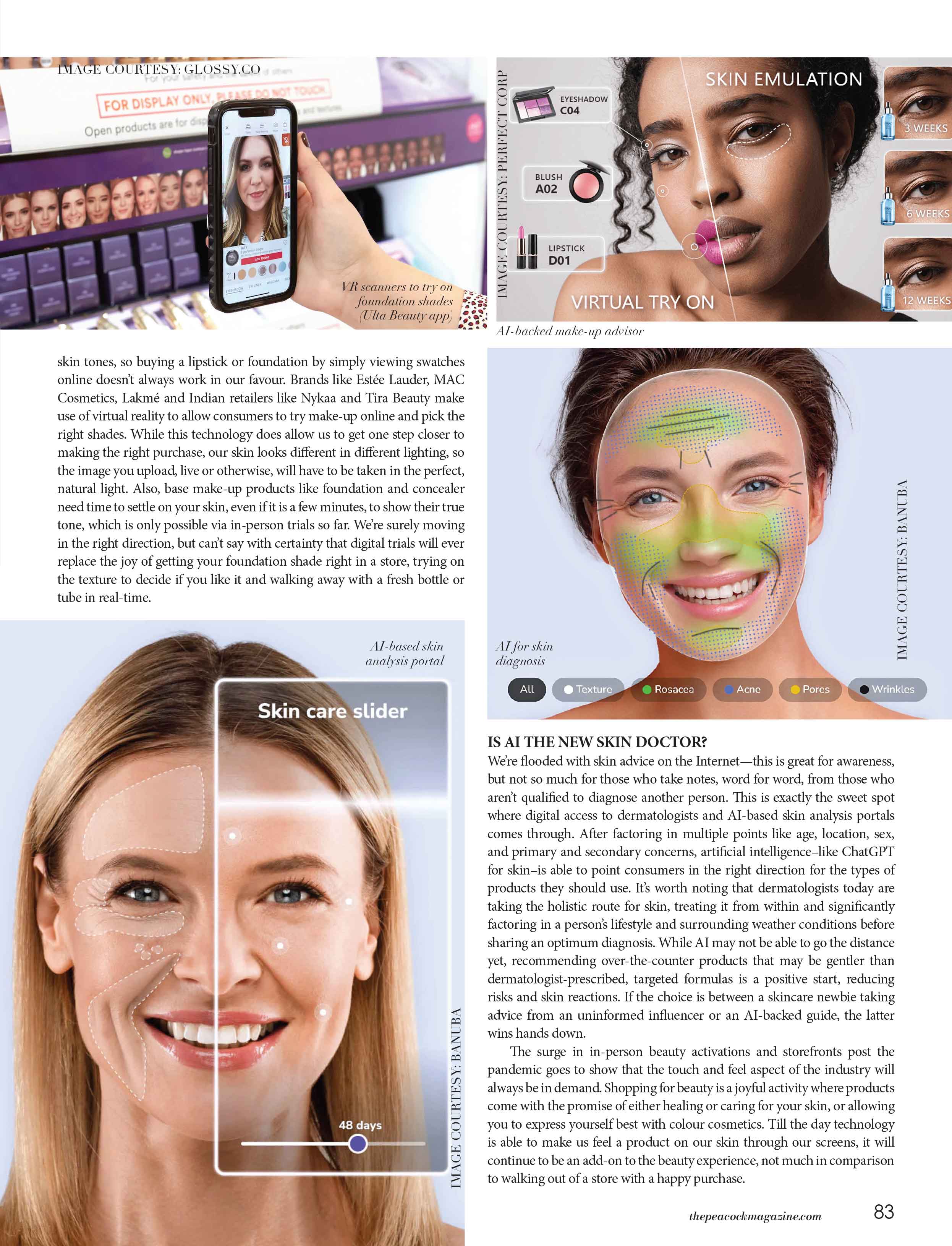
VR and AI are slowly but surely infiltrating the beauty space. Here’s what we like and are wary about
By Anjan Sachar
Adversity is what often leads to the biggest changes, and the pandemic was undoubtedly one of scale. It made working from home a possible normal, encouraged (re: forced) us to reinvent how we run our businesses and showed us the possibility of a life that is primarily virtual. The beauty industry was one of the few that saw a spike in sales globally–it offered a sense of comfort and excitement to those homebound across the world. While virtual reality and the use of artificial intelligence in the industry weren’t new, the pandemic pushed companies to expedite their plans and the use of technology in offering customers the best possible experience behind their screens. Now that the world is back to the in-person normal, do we still need or want beauty to be digital first?

Shopping for makeup via VR
Make-up is undoubtedly the hardest beauty category to shop for online. Colour theory has shown us how different the same shade looks on various skin tones, so buying a lipstick or foundation by simply viewing swatches online doesn’t always work in our favour. Brands like Estée Lauder, MAC Cosmetics, Lakmé and Indian retailers like Nykaa and Tira Beauty make use of virtual reality to allow consumers to try make-up online and pick the right shades. While this technology does allow us to get one step closer to making the right purchase, our skin looks different in different lighting, so the image you upload, live or otherwise, will have to be taken in the perfect, natural light. Also, base make-up products like foundation and concealer need time to settle on your skin, even if it is a few minutes, to show their true tone, which is only possible via in-person trials so far. We’re surely moving in the right direction, but can’t say with certainty that digital trials will ever replace the joy of getting your foundation shade right in a store, trying on the texture to decide if you like it and walking away with a fresh bottle or tube in real-time.
Is AI the new skin doctor?
We’re flooded with skin advice on the Internet—this is great for awareness, but not so much for those who take notes, word for word, from those who aren’t qualified to diagnose another person. This is exactly the sweet spot where digital access to dermatologists and AI-based skin analysis portals comes through. After factoring in multiple points like age, location, sex, and primary and secondary concerns, artificial intelligence–like ChatGPT for skin–is able to point consumers in the right direction for the types of products they should use. It’s worth noting that dermatologists today are taking the holistic route for skin, treating it from within and significantly factoring in a person’s lifestyle and surrounding weather conditions before sharing an optimum diagnosis. While AI may not be able to go the distance yet, recommending over-the-counter products that may be gentler than dermatologist-prescribed, targeted formulas is a positive start, reducing risks and skin reactions. If the choice is between a skincare newbie taking advice from an uninformed influencer or an AI-backed guide, the latter wins hands down.
The surge in in-person beauty activations and storefronts post the pandemic goes to show that the touch and feel aspect of the industry will always be in demand. Shopping for beauty is a joyful activity where products come with the promise of either healing or caring for your skin, or allowing you to express yourself best with colour cosmetics. Till the day technology is able to make us feel a product on our skin through our screens, it will continue to be an add-on to the beauty experience, not much in comparison to walking out of a store with a happy purchase.
